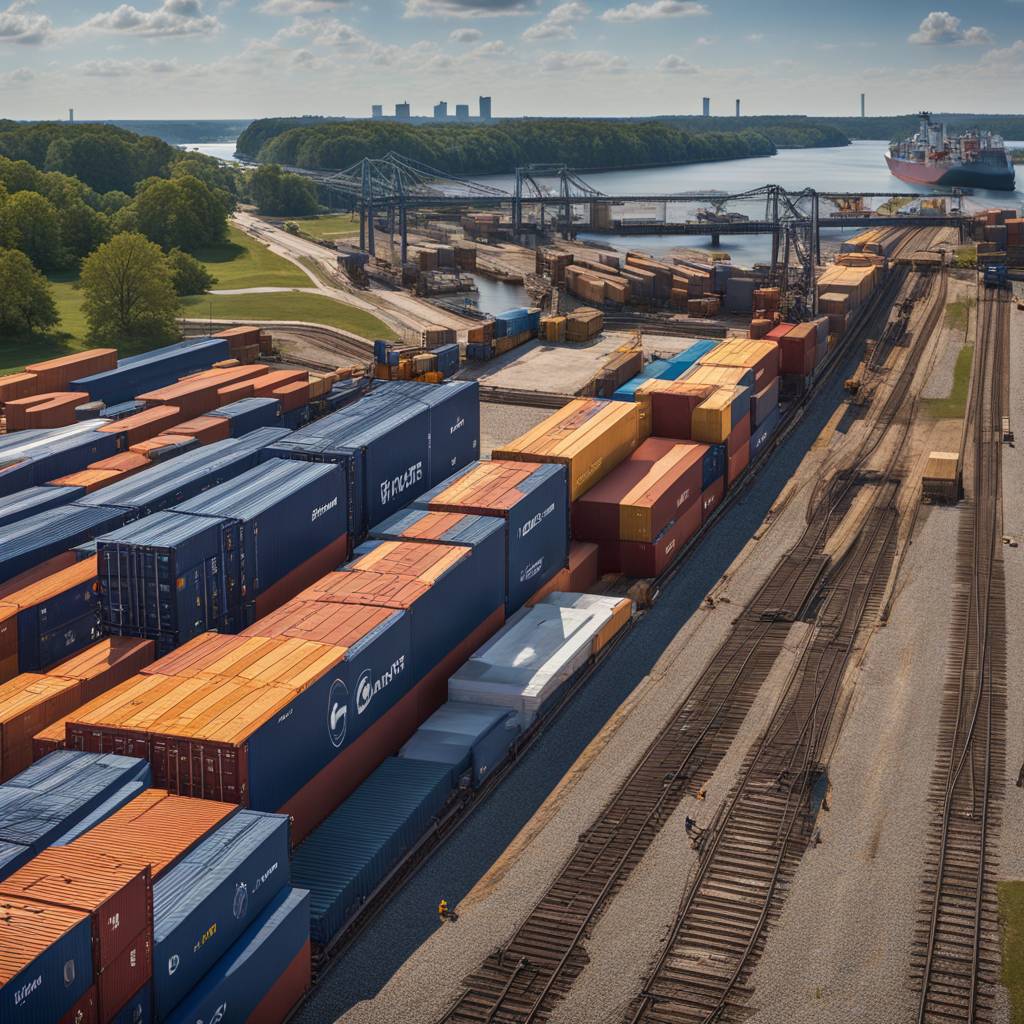In response to the closure of the Port of Baltimore, CSX announced a new rail line to move diverted containers to the Port of New York and New Jersey. However, the containers have now been unloaded back in Baltimore, with Ports America Chesapeake managing the procession during the port closure. The volume of containers remains the same, but the touchpoints in the handling process have changed due to the diversion. The train route for the diverted cargo includes Chicago, Kearney, New Jersey, and Baltimore. Supply chain intelligence firm Project44 reports that containers originally destined for Baltimore have been rerouted to other ports such as Norfolk, New York, Wilmington, and Newark-Elizabeth.
Rail transport is preferred by retailers and shippers due to lower costs compared to trucking. Norfolk Southern has announced a dedicated service to facilitate the flow of diverted freight between the Port of New York and New Jersey and the Port of Baltimore, starting on April 5. The collaboration with Ports America and the launch of this service aims to ensure the efficient movement of cargo during the port closure. Major ocean carriers have invoked contract clauses to transfer responsibility for transportation of cargo from diverted ports to shipping clients, adapting to the changing circumstances.
Despite the closure of marine container ship operations at the Port of Baltimore, land operations have continued to ensure that operations are not disrupted. Labor cooperation with the International Longshoremen’s Association has been crucial in maintaining a steady workforce on the waterside while also training water crews in alternate skills to keep ILA labor employed. The ILA represents longshoremen across various ports and regions, and they are currently in labor negotiations over a contract that expires in September. Trucking operations at the port have remained normal, with trucking turn times at 60 minutes. The container yard typically holds a higher number of import containers, but currently, less than 500 import containers are present.
The Port of Baltimore’s closure has led to a backlog of ten stranded vessels, including a roll-on/roll-off vessel loaded with cars, farm equipment, and trucks. Despite the vessels being stranded, there are no discussions of unloading the RORO vessel or rerouting its contents to another port at this time. The port is a significant hub for auto, farm equipment, and light truck import-exports, processing a large portion of the nation’s international vehicles trade. The closure is estimated to have a significant economic impact, with a weekly value of goods processed through the port estimated at $700 million, and an overall indirect impact of $6.6 billion per month due to disruption in cross-border flow of goods.
Overall, the coordination between rail companies, port operators, and labor unions has been essential in managing the diversion of cargo during the Port of Baltimore closure. Shippers and retailers continue to rely on rail transport for cost-effective and environmentally friendly shipping options, despite the slower speed compared to trucking. The dedicated service by Norfolk Southern and ongoing discussions with Ports America aim to ensure the smooth flow of diverted freight between the affected ports. Despite the challenges posed by the closure, the port community has worked together to maintain operations and minimize disruptions in the supply chain.













